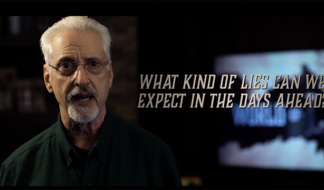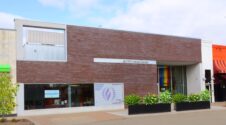by Bob Roehr
BOSTON, Mass. – Current HIV prevention activities for gay men are like "using AZT monotherapy to treat HIV infection," University of Pittsburgh research Ronald Stall told the 15th Conference on Retroviruses and Opportunistic Infections meeting in Boston last week.
His study reviewed the published literature on the incidence of HIV – how many people become infected each year – and found that from 1995 to 2005 the annual incidence rate was 2.5 percent among men who have sex with men (MSM) in the developed world. Only Australia was significantly lower, at 1.1 percent
Surprisingly, "there were no increases or decreases in incidence rates among MSM in the industrialized countries from 1995 to 2005 – rates are not going up or down."
Stall plugged the mean annual incidence rate for gay men in the United States, about 2.4 percent a year, into a model of young gay men. It started at the age of 18 and assumed that none of them were infected with HIV. By the age of 25, about 15 percent of them would have become infected with HIV; by age 35, about a third; and by age 40, about 41 percent. "We were horrified that our model yielded prevalence estimates that were that high," he said.
The next step was to compare these numbers with prevalence rates among men, by age, in a very large prevalence study of five American cities, published by the CDC in 2005. "What we found is that the model fits exactly what is going on in terms of HIV prevalence among gay men, at least in America's largest urban centers."
"This model that culminates in an HIV prevalence rate of 41 percent at age 40 is not something that is a prediction of what may happen – we are describing an epidemiological phenomenon that is occurring all around us. It will continue to occur among young American men if we do not find ways to lower HIV incidence rates further."
Community viral load
Stall pointed to the recent analysis by Greg Millet at the CDC, which showed that African American men engage in less risky sexual behavior than European American gay men and are less likely to use drugs. Millet showed that the rate of people who did not know their HIV status and lack of access to antiretroviral care among African American men who know that they are positive is so high that it results in a much greater number of men who have a high viral load, and thus are more likely to transmit the virus.
Within that context, "even modest levels of sexual risk taking can result in very high transmission rates. It is the context that matters with these guys, not their individual risk-taking behavior," Stall said.
The concept of "community viral load" is important to understanding and addressing HIV prevention within relatively closed networks of sexual activity such as gay men and particularly African American gay men, as people tend to engage in sex within a limited socio-demographic group.
He believes that bringing more people into care will help to lower the community viral load of particularly vulnerable populations and communities "so that just a tiny little slip within the sexual networks does not result in HIV transmission."
Interventions
According to Stall, the problem is not with the lack of effective prevention interventions – studies have shown that some specific programs can increase the use of condoms during anal sex by 60 percent – but in the lack of political will and funding to move these proven demonstration programs into broader use.
"The amount of funding that is going into supporting HIV prevention in the United States is a rather small sliver of the entire budget."
Stall argued, "The interventions that we are using only operate at the level of the individual – they are not designed to operate in terms of context like community viral load – in terms of funding for getting prevention projects into the field, in terms of policy, in terms of treatment for comorbid conditions."
"It's not just biology and it's not just behavior, it's intervention that can join the two." He said, achieving the Australian incidence of infection in the US would cut the number from 40 percent to 20 percent by age 40.
He said current practices are prevention monotherapy, and called for "a prevention cocktail" of multiple, reinforcing interventions. He wants to test various combinations prevention interventions to see whether or not they generate any synergistic effect.
Stall believes, "With the incidence rates that we are already seeing in the published literature we can expect an ongoing HIV epidemic among gay men that will yield high prevalence rates over time. We have got to find a smarter way to do HIV prevention in our country. Operating only at the level of the individual may not be the smartest way to go."
But not everyone was buying into his data and prescription for change. Harold Jaffe, MD, the former head of the CDC's HIV programs, believes there has been an increase in unsafe sex by gay men over the last several years, and that has resulted in increasing numbers of new infections. While some local studies support that conclusion, others do not. And Stall's analysis shows a flat incidence of infections over a decade.
Jaffe also questioned whether the gay community is as engaged in making HIV prevention the priority that it was in the past.
Stall responded, "All men are having a hard time staying consistently safe every time they have sex…I don't think it is helpful to lay blame at a community. There are much smarter ways of helping the community than blaming victims."










